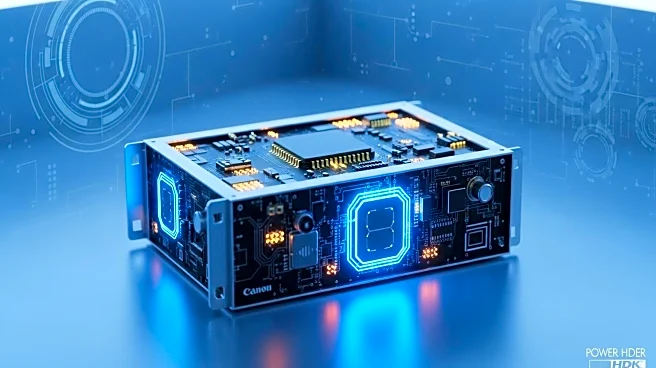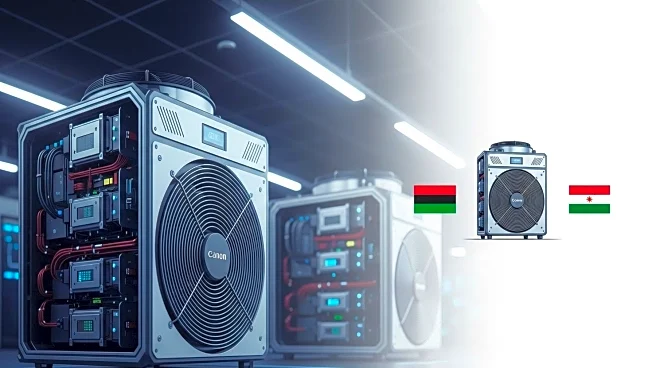What's Happening?
Navitas Semiconductor has unveiled new 100 V GaN FETs and 650 V GaN and SiC devices designed for NVIDIA's 800 VDC AI factory architecture. This development aims to address the power challenges of AI factories, which require high power density and efficiency. The 800 VDC architecture allows direct conversion from utility power to 800 VDC within data centers, eliminating multiple conversion stages and enhancing energy efficiency. This approach supports the demands of AI computing platforms by providing scalable infrastructure and simplified power distribution, aligning with global low-voltage DC standards.
Why It's Important?
The introduction of 800 VDC power architecture is crucial for the evolution of data centers, particularly those supporting AI and high-performance computing workloads. By offering higher efficiency and scalability, this architecture addresses the limitations of traditional power systems, paving the way for more advanced and reliable data center operations. The shift to 800 VDC is not only a technological advancement but also a strategic move towards meeting the growing demands of AI-driven industries. This development could lead to significant improvements in data center performance, benefiting sectors reliant on AI and high-performance computing.
What's Next?
Navitas Semiconductor is set to continue its collaboration with NVIDIA and other industry leaders to further develop and implement the 800 VDC power architecture. The company is providing samples and evaluation boards to qualified customers, indicating readiness for broader adoption. As the industry moves towards megawatt-scale AI computing platforms, Navitas' GaN and SiC technologies are expected to play a key role in meeting efficiency and reliability requirements. This could lead to increased partnerships and innovations in power semiconductor technologies, driving further advancements in the field.
Beyond the Headlines
The development of 800 VDC power architecture may have wider implications for the semiconductor industry, potentially influencing global standards for data center operations and driving advancements in power conversion technologies. The focus on high-efficiency solutions aligns with environmental sustainability goals, highlighting the role of technology in addressing climate change challenges. This innovation could also spur further research and development in wide bandgap semiconductor technologies, fostering growth and innovation across various sectors.











